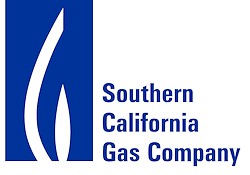With solar and wind power making distributed generation an increasing factor in California’s  energy market, utilities face the challenge of covering their fixed costs. A new tariff issued by California to Sempra Energy’s Southern California Gas Co. aims to benefit utilities and their customers.
energy market, utilities face the challenge of covering their fixed costs. A new tariff issued by California to Sempra Energy’s Southern California Gas Co. aims to benefit utilities and their customers.
The state’s Public Service Commission has issued its first Distributed Energy Resources Service (DERS) tariff to SoCalGas. The DERS tariff allows SoCalGas to own and operate Combined Heat and Power (CHP) facilities on or near a customer’s location, and provide output from the CHP to the customer at regulated prices.
The tariff also creates a regulatory framework for “competitive micro grids,” which use local or on-site power generation to serve a customer or group of customers, using CHP or cogeneration technologies. That local output, plus reduced costs to transmit the power, can result in lower costs, and can allow greater competition between suppliers.
California has set a target for new CHP installations capable of generating 4000 megawatts (MW) by 2020. A recent study by the Commission said adoption of CHP in the state has been slow; without DERS, output would likely be less than 50% of the target.
SoCalGas told the Commission that the biggest potential for CHP is for systems producing 20 MW or less, at commercial buildings, hospitals, university campuses and similar facilities.
The Commission’s decision to issue the tariff followed more than year of hearings and studies of its potential impact on competition, cost and pricing methodologies.
A major issue was whether SoCalGas, as a gas utility, should own and operate electric generating facilities, and whether that required it to be regulated as an electric utility.
The Commission decided that, because SoCalGas does not intend to distribute the power to customers outside the areas served by the CHPs, and will not own the energy the CHPs produce, it does not need additional regulation.
The Commission also decided that customers served by a CHP will be permitted to export excess electric power to the grid, selling up to 25% of their output to electric utilities.
